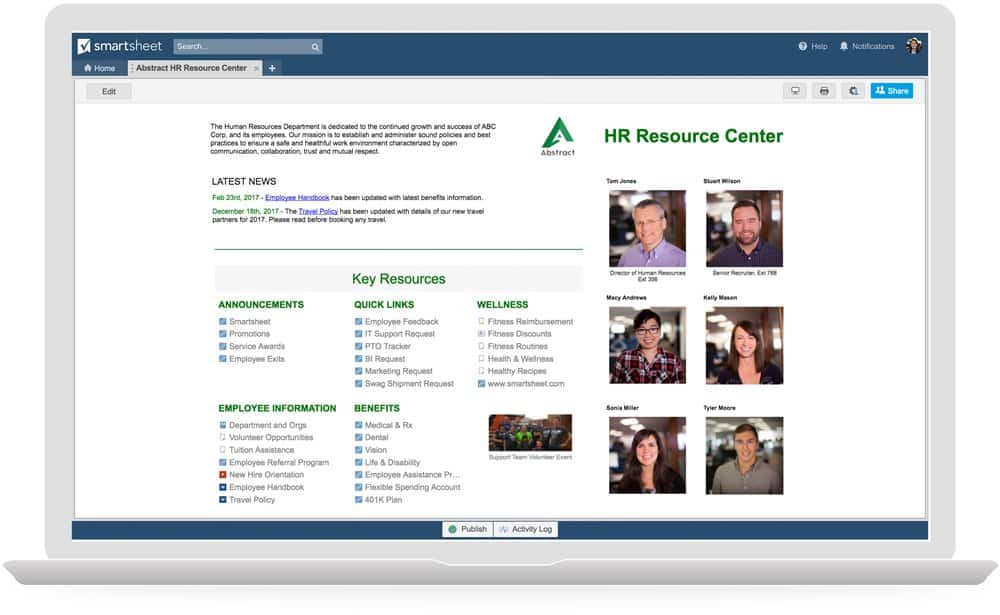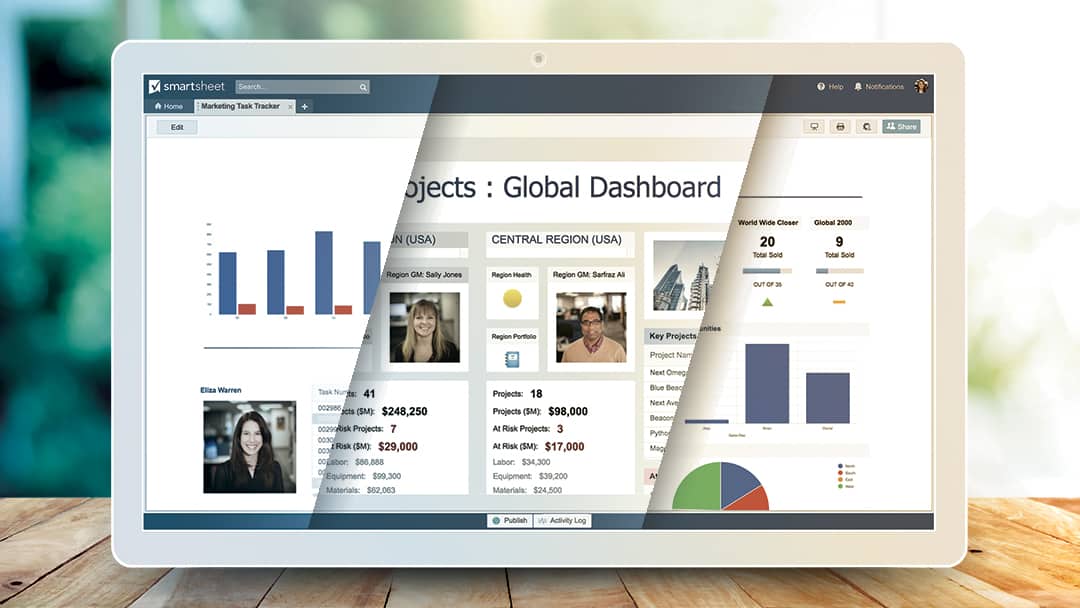A culture of transparency, in which a company makes its strategic plans, playbooks, short-term and long-term goals, financial earnings, and important metrics available to all employees, increases visibility into department performance, promotes a healthier exchange of information, and can improve morale and engagement.
Transparent, thoughtful, and precise internal communications strategies provide employees with context for decision making at the executive level. This boosts internal enthusiasm, company pride, customer and product advocacy, and motivates internal teams to refine processes to make them more lean and scalable.
Cultivating a culture of transparency can be easier said than done, but the payoff is worth the investment. But, are you doing enough to promote internal transparency in your organization?
Below are six ways to help you create a culture of transparency by providing employees with real-time visibility into relevant information.
1. Engage with customer insights
Customer satisfaction is a top priority for many C-Level executives. Teams can make deeper connections with customers if they have access to voice of the customer (VOC) research, customer stories, product reviews, and product feature requests.
Business leaders who are transparent about customer feedback and encourage the socialization of customer survey results across departments also hold the organization accountable to its customers.
When employees share real-life use cases with visibility tools such as Smartsheet portals, they can raise awareness around authentic stories that show how products benefit customers.
If customer evidence and quotes are centralized in a portal, individuals can receive notifications whenever new customer success stories are shared. Exposure to these resources can enrich employee appreciation for customer experiences and give them some favorite go-to examples that demonstrate a product or service’s impact in practice.
When speaking with someone who is unfamiliar with what your company does, what’s more memorable? Listing off product features, or telling a compelling story about how a product helped a specific customer?
2. Reduce platform fatigue
We’ve all worked in situations where reports and other insights are either hoarded or hard to find. Information is often buried in email, file sharing and storage platforms, instant messaging apps, and other collaboration tools. While frustrating for individuals, using a series of disconnected software platforms for critical workflows can waste time, which raises red flags for executives.
In fact, a recent Forbes article reported that toggling between platforms in order to handle unstructured work tasks wastes 32 days of workplace productivity per year. Unstructured work is dependent on disparate platforms—such as email, spreadsheets, word processors, project management software, and collaboration apps—where information misalignment is often a byproduct.
Related Content
Smartsheet for Slack gives you visibility into rapidly changing work
When work management platforms are compatible with the popular applications that employees already use, connectivity is boosted and platform fatigue is reduced. Smartsheet, for example, integrates with nearly 60 of the most widely used applications including Jira, Salesforce, and Google Workspace.
3. Connect teams with vital resources
With Smartsheet portals, workers can find valuable resources without chasing down coworkers for more information. Instead, they can connect with stakeholders and gain immediate access to the information they need to get work done.
For example, a human resources (HR) department can create a portal that gives all employees access to key resources, from request forms to employee benefit documents. What’s more, the portal could have sections that showcase important links and portals owned by other departments, creating a network of essential information.
The HR team could then connect to a product team’s portal used to track upcoming products, new features, and expected launch dates. Add access to relevant documentation and helpful links, and you have a centralized location for the most recent product information, and digital assets. These details would help marketing and public relations teams create accurate, on-brand, and compelling content on a regular basis.
4. Combine real-time data with everyday work
Real-time data displayed on a living dashboard is a great way to track team efficiency and impact on the customer experience. Visibility into key performance indicators (KPIs) empower people to act faster.
Transparency around performance metrics gives individual contributors a snapshot of health, whether you’re operating a website or delving into sales figures. Workers can then fold data learnings into their work plan.
Having real-time metrics widely available can also reduce reliance on anecdotal evidence, and is a way to employ clear pressure to increase accountability. Instead of anecdotal evidence or relying on old data, individuals have access to baseline metrics prior to testing hypotheses, knowing that the numbers are accurate and up-to-date.
Related Content
[Infographic] How much time are you wasting on siloed information?
5. Treat employees like investors
When executives treat employees as if they are shareholders, every business win can energize the organization. On the other hand, being open about significant losses can, at the very least, prepare employees for changes to come.
Consistent visibility into real-time financial health, short-term and long-term roadmaps, and customer engagement can help them visualize the company’s path to success.
Some C-Suites reveal this information during quarterly all-hands meetings, but it’s challenging for employees to keep current. Making sure all employees have access to video recordings and presentation decks after company-wide meetings is a step in the right direction, as is giving them access to a real-time dashboard of business metrics.
But how can leaders gain additional insight into how their employees feel about those in-depth presentations?
Having a portal that gives employees access to a feedback form could work toward making them feel heard and valued. When executives engage directly with employee questions and feedback, they model transparency.
6. Deploy flexible solutions that scale
A scalable solution helps maintain consistency and reduces the learning curve for implementing and amending processes. It also reduces platform clutter and aligns internal messaging.
Say your marketing department is using an intuitive software platform or product that resonates with individuals and makes them more productive as a team. Can you roll out similar solutions to adjacent teams, such as demand generation, customer care, or sales enablement?
Mod Pizza’s use of Smartsheet Control Center is a prime example of how to scale and sustain a software platform for tracking operations KPIs for new store openings. Control Center empowers them to make global changes across every project, so they can keep their processes consistent.
Transparency is in the details
In every industry, transparency and visibility promote an open company culture, empowering employees to keep up with business initiatives. They can gain insight into product innovation, customer feedback, useful data, and KPIs.
Smartsheet Control Center and Smartsheet dashboards can help people in organizations both large and small make meaningful connections to their work and, more importantly, to each other.



